How to Make a Garden Compost
 Many people like to garden on patios or on window sills, and others just water the office plant on occasion. Then there are those who see gardening as simply a way of life. For avid gardeners, there is one common element you’ll find in almost all their gardens. Compost! But how to make a garden compost?
Many people like to garden on patios or on window sills, and others just water the office plant on occasion. Then there are those who see gardening as simply a way of life. For avid gardeners, there is one common element you’ll find in almost all their gardens. Compost! But how to make a garden compost?

If you are one of the former types of gardeners, there’s no need to fear, compost isn’t some scary gardening rite that none but the chosen may dare attempt. Yes, you can do it!
There are a few do’s and don’ts, but once you grasp the overall concept, I just know you’ll join the ranks. It’s both a time and money saver, along with a fantastic way to keep your garden healthy!
Table of Contents
Soil vs. Compost… What’s the difference?
Soil is what plants grow in. Compost is the decaying materials from plants (and in nature, animals too) that’s nutrient dense. While it is possible for a plant to grow in pure compost, it’s not ideal and can have unstable effects.
Adding compost to soil, on the other hand, is FANTASTIC for plants!  There are as many types of topsoil (the top layer of the earth that plants grow on/in) as there are places.
There are as many types of topsoil (the top layer of the earth that plants grow on/in) as there are places. 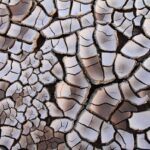
So if you are looking to put a non-native plant species in your garden, you’ll have to compensate with the type of soil you prepare.
Compost can add moisture retention to sandy soil, and help with drainage in soil that has higher clay content.
You don’t want to grow your garden in solely compost. It has a tendency to drain quickly and dry out too. When added to soil, however, you can get a wonderful nutrient rich boost for your plants to utilize for months!
Compost Basics
So the be all end all with compost comes down to microbes. You want to promote the right kind of microbes in order to get the break down process rolling. 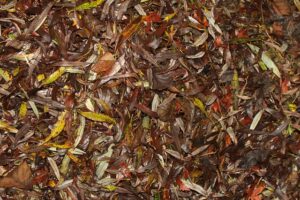 There are two main components to this experiment in natures laboratory: carbon and nitrogen.
There are two main components to this experiment in natures laboratory: carbon and nitrogen.
The easy way to remember this, is that carbon is going to be most of your brown things; not all, but it’s a good rule of thumb. One notable exception is coffee grounds. (They are VERY high in nitrogen.)
The sticks, dead leaves, hay, things of that nature are high in carbon and provide a lot of the structure of compost.
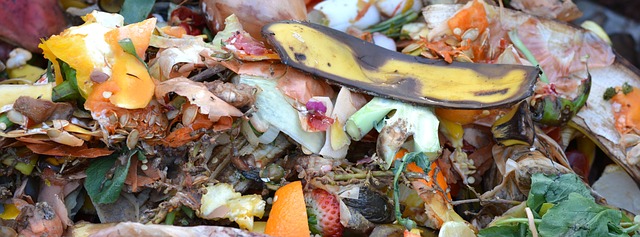
Your kitchen scraps like apple cores, melon rinds, carrot cuttings, potato skins, etc that are leavings from fresh, living things are going to be your sources of nitrogen. These two components together end up facilitating the breakdown that makes that sweet, sweet black gold.
A, B, C’s
What you will actually need to compost is both simple and varied. Simple in that you really only need a few things, but varied in that you can choose to compost a variety of ways and methods, but they are all variations on the basic principle.
 You already know the first two components: nitrogen and carbon. With those things alone you can technically compost as long as you have a long time line and no need for the soil amendment any time soon. In order to help the process along, you can add in the next two to four components.
You already know the first two components: nitrogen and carbon. With those things alone you can technically compost as long as you have a long time line and no need for the soil amendment any time soon. In order to help the process along, you can add in the next two to four components. 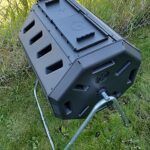
You’ll need water and oxygen, and to help keep things in order and as easy as possible, you can add a compost bin and a pitch fork/rake/turning tool. Some compost bins you can buy have a barrel and handle you crank to spin it manually, making the pitch fork/rake unnecessary.
1, 2, 3’s
Now that you’ve got the materials necessary, let’s address the actual process of composting as simply as we can. You need the carbon and nitrogen because that’s the actual material will break down and provide nutrients for your soil. 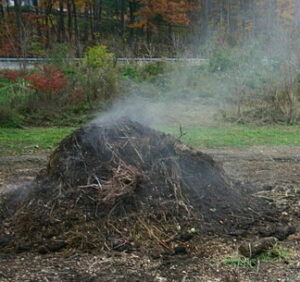 The water provides the suitable environment for the microbes to grow and flourish.
The water provides the suitable environment for the microbes to grow and flourish.
The oxygen also helps the microbes to stay active and working to break the carbon and nitrogen rich material down. You get oxygen by turning the compost pile every so often. You don’t want it to dry out, and you don’t want it to be sodden.
Finding a good balance will jump start your microbes, and the pile will begin to heat up. That is a good thing! Compost piles can and want to reach up to 130 degrees for the party to really get going!
 Keeping a balance of carbon and nitrogen is also important. If you’ve been heavy on the nitrogen rich kitchen scraps lately, and it begins to have an odor, find some carbon to add in, and ease up on the kitchen scraps for a while. The same thing for a more carbon heavy pile. As in nature, everything in balance.
Keeping a balance of carbon and nitrogen is also important. If you’ve been heavy on the nitrogen rich kitchen scraps lately, and it begins to have an odor, find some carbon to add in, and ease up on the kitchen scraps for a while. The same thing for a more carbon heavy pile. As in nature, everything in balance.
It is common to have 3 compost piles at varying stages of decomposition. Your initial pile has everything that’s been initially thrown in the compost. 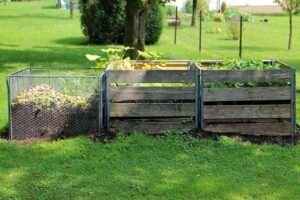 The second pile has been working for a while and is about midway through decomposition process.
The second pile has been working for a while and is about midway through decomposition process.
The final pile tends to be the final stage of decomposition or the actual ready-to-use stuff that you can come and get at your leisure. This 3 bin method is just one of many strategies you can use.
I won’t go into them all here, but if you check out this article, they break down each method in an easy to understand way! You can choose whatever fits your maintenance type and budget to find the best solution for your individual needs.
Reduce, Reuse, Recycle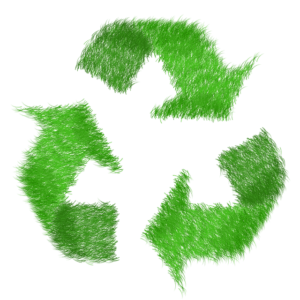
We all have heard this, but I think composting is where that concept shines. Reducing your waste is very important. Reusing things wherever you can help set a good example for those around you, and saves money! Recycling was invented by nature, and what better example could you ask for?
Composting does not have to be daunting or complicated. Mother nature does it every day! Let’s take a page out of her book and use what we have to better our gardens, our communities, and our lives!
We are working on a composting project right now, and we’d love to see yours! Please leave a comment and send us a picture of your labor of love and we can grow as a community of gardeners!
Now that you know how to make a garden compost, its time to get gardening! But if your still brainstorming your garden check out these Beautiful Garden Design Ideas to Inspire You!
With gratitude,
Randi
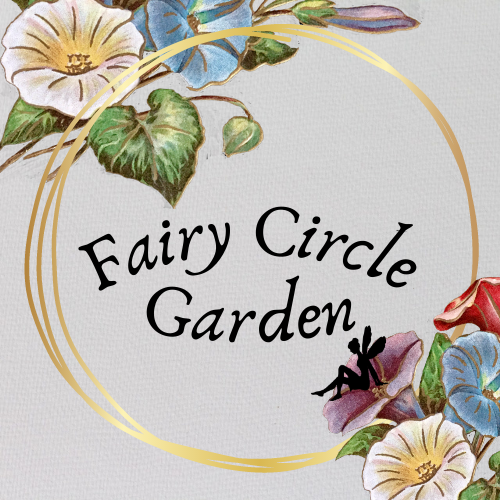
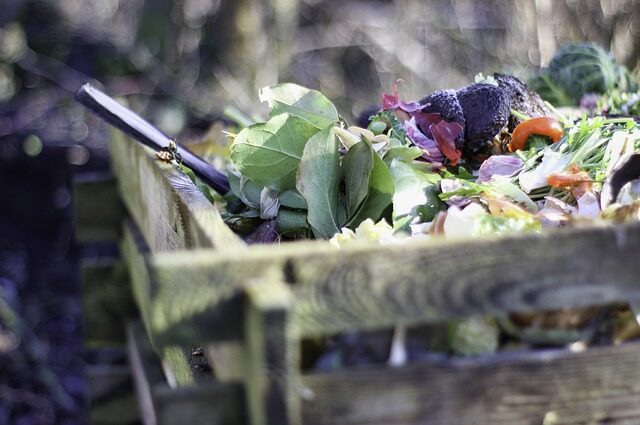

Thank you for a great article and content 🙂 I am new to gardening and that was a great 101 to compost.
You’re more than welcome! I feel like those that are new to gardening are often daunted by the thought of composting, but not only is it a great time and money saver, but it is way easier than commonly thought. I’m glad you enjoyed it! Thank you and have a great day!
Your article is really well-written. I know nothing about gardening. Your article has given me some insight about the difference between soil and compost. Is it very important to have 3 compost piles at varying stages of decomposition?
Thank you very much! As far as your composting question, I wouldn’t say it’s very important, but it helps speed things along. The separation of the piles makes it so that you have one ready to go right away. If you didn’t separate them, you would have to search through the one pile to find a section of ready-to-go compost, and then you might only get a little bit of it for your effort. If you just left it, you would eventually have a big pile of ready to go compost… nature is good that way. ?
So the three-bin system has more to do with saving time and energy by keeping the early-mid-ready stages of composting material separated. But thank you so much for the question! I am sorry I did not make that more clear in the article, but I’m glad I got to answer your question here!
Thank you again and have a great day!
Thank you for your thorough explanation of not only what you need to do, but how and why it works. You explain the science of composting in an easy to understand way.
Why thank you so much! I appreciate that! I was scared of composting for the longest time but when I finally decided to look into it, I found that it was much simpler than I had made it out to be in my mind. I hope this provides needed information and confidence to gardeners looking to get started- or even just up their game. Please let me know if there was anything that could use more explanation; or if you have any questions.
Thank you for this explanation. I’ve always considered composting as a complex and nasty gardening activity but now I’ve read your article I believe I can do it too! I’ll let you know how I go. Looking forward to your next post.
That’s exactly what I thought, too! When I finally sat down to do it, though, it was not nearly as gross as I thought. ?
It has also made my little garden thrive! Plus I got to get a few more fairy garden accessories with the money I saved from buying the fancy compost replacement at the store.
Please feel free to share pictures and your adventure with us so we can grow as a community!
I’ve been looking for this info for a while now for my parents their garden. Thanks for sharing these insights. It will help them a lot as you show how it is easier than we might think.
Glad I could help! I have found it to be both a time and money saver. I’m sure once the “mystery” is gone, they will too! Happy Gardening!
This was an informative article! I definitely wasn’t born with green thumbs, so this is helpful information for someone like me. What would you suggest for someone who doesn’t have a yard but wants some compost for indoor plants? Is there a special kind of container you need for doing it indoors?
There are indoor composting bins you can buy, but if you are not looking to spend a pretty penny, you can simply go with a good heavy-duty bin. Depending on how many plants you will be composting for, you can go anywhere from a 5-gallon bucket to the 18-gallon trash bins. If you are a novice gardener and are starting small, I think a good 5-gallon bucket will be plenty big. Just make sure it is in a cool dark place that won’t be messed with too much. Good luck and let me know how it goes! I am glad I am able to be of help!
Happy Gardening!
I really enjoyed this article. I love spring and summer because it means I get to explore with gardening. Last year I planted lots of seeds in the front yard but the summer before that I planted different species of cactus in a big window pot and they turned out lovely. I haven’t advanced enough yet to deal with compost but it does give me an idea for what to try next.
I am so glad you enjoyed it! I agree that spring and summer are both very exciting! Compost does not have to be as daunting as it seems initially. If you want to give it a try, have at it. Let me know how it goes. Happy Gardening!
Thank you for telling us the difference between compost I had no idea if there was a difference between these two since I am new to gardening.
I will use these tips.
Glad to help! When I first started gardening, I didn’t know the difference either. ? The more I learn, the more I understand how little I know, right?